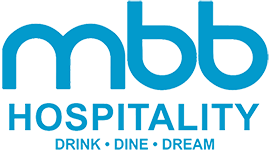
In the restaurant industry, managing food costs is not just an operational task—it’s a strategic imperative. Understanding and optimizing restaurant food costs can be the difference between profitability and financial struggle. This article explores effective strategies for controlling food costs while maximizing restaurant revenue.
Comprehensive Food Cost Analysis
The first step to mastering restaurant food costs is conducting a comprehensive analysis. This means going beyond the surface to scrutinize every aspect of your food expenses. It involves tracking the cost of each ingredient, understanding seasonality, and recognizing price fluctuations. By gaining a detailed insight into where every dollar goes, restaurant owners can identify opportunities to cut costs without compromising quality.
Delving deeper into food cost analysis also involves comparing your costs with industry standards to gauge performance. Using cost percentage formulas, you can determine the ideal cost for each item on your menu. This granular approach helps in making informed decisions about menu design, portion sizes, and pricing, ensuring that each dish contributes positively to your bottom line.
Implementing Food Costing Solutions
With the right food costing solutions, restaurants can turn a meticulous eye to their inventory and procurement processes. Leveraging technology can streamline these processes, reducing waste and ensuring precise portion control. Implementing software that integrates with your point-of-sale (POS) system can provide real-time data on food usage, allowing for immediate adjustments in purchasing and menu pricing.
Advanced food costing solutions offer predictive analytics, helping restaurants forecast future spending and adjust budgets accordingly. They can also facilitate better stock management by setting reorder points that prevent both overstocking and stockouts. With features like these, restaurants can minimize losses due to spoilage and ensure they are purchasing inventory at the optimal level and price.
Strategic Purchasing and Vendor Negotiations
Reducing restaurant costs starts with strategic purchasing. Building strong relationships with suppliers can lead to more favorable pricing and terms. Regularly reviewing vendor contracts and negotiating based on your volume and loyalty can significantly lower the cost of goods sold (COGS). Additionally, exploring local markets and seasonal products can yield fresher ingredients at lower costs due to reduced transportation expenses.
Another aspect of strategic purchasing is the consolidation of suppliers. By reducing the number of vendors, you can increase your purchasing power and reduce administrative overhead. Additionally, consider joining a buying group to leverage collective bargaining power. Regularly exploring alternative suppliers or products can also uncover cost-saving opportunities without sacrificing ingredient quality.
Menu Engineering and Pricing
Menu engineering is an essential tactic in the arsenal for controlling food costs. Designing a menu that balances high and low-cost ingredients can optimize profits. Pricing dishes based on their cost percentage allows for a better margin while providing value to the customer. It’s a delicate balance that requires ongoing evaluation to respond to changing costs and consumer demands.
When engineering your menu, consider the contribution margin of each item—that is, the actual dollar amount each dish contributes to overhead after accounting for food costs. Dishes with higher contribution margins should be given prominence on the menu. Train your staff to understand these margins as well, so they can effectively upsell higher-margin items.
Waste Reduction and Sustainability Practices
Minimizing waste is crucial in managing restaurant food costs. Training staff on proper portioning, storage, and handling can drastically reduce the amount of food that ends up in the trash. Implementing sustainability practices, such as composting or donating excess food, not only reduces costs but also resonates with eco-conscious consumers.
Beyond basic waste reduction, consider implementing a comprehensive sustainability program. This can include practices like sourcing from local producers to reduce transportation costs, which also lowers your carbon footprint. Engaging in full utilization cooking, where every part of the ingredient is used, can also decrease food costs while inspiring creative new menu items.
Seasonal Menu Adaptation
Seasonality plays a pivotal role in food costs. Embrace the seasons by adapting your menu to incorporate seasonal produce, which is generally more affordable and at peak quality. This not only lowers costs but also adds a freshness to your menu that can attract customers. Furthermore, it demonstrates a commitment to sustainability and support for local farmers, enhancing your restaurant’s reputation.
Training for Efficiency
Staff training is a critical component in controlling costs. Invest in comprehensive training programs that cover efficient food preparation techniques, correct portioning, and minimizing waste. Educating your team on the cost of ingredients and the impact of waste can empower them to make cost-effective decisions in their daily tasks.
Regular Menu Cost Reviews
In an industry where prices fluctuate frequently, regular reviews of your menu costs are essential. Adjust menu prices periodically to reflect the changes in food costs while considering customer price sensitivity. This proactive approach ensures your pricing strategy remains aligned with market conditions and cost objectives.
Revenue Management Strategies
Beyond managing costs, focus on maximizing revenue. Implement dynamic pricing for peak times or special events, and consider time-bound promotions to drive traffic during slower periods. Analyzing sales data can help identify the most profitable items, allowing you to make data-driven decisions about menu changes and promotional efforts.
In addition to strategic cost management, optimizing revenue is crucial. Consider crafting early bird specials or happy hour deals to increase turnover during traditionally quiet hours. Explore the potential of upselling premium ingredients or dishes, and train your staff to recommend higher-margin items. By using a combination of these tactics and closely monitoring their success, you can find the perfect balance that boosts your bottom line without alienating your customer base.
Investment in Automation
Invest in automation where possible. Automated kitchen equipment can lead to more consistent portion sizes and quicker preparation times, reducing both labor and food costs. Additionally, automation in ordering and inventory tracking can help prevent errors that lead to waste.
Conclusion: A Strategic Approach to Food Costs
Effective management of restaurant food costs is a multifaceted endeavor that requires a strategic approach. It’s about making smart choices in purchasing, staying flexible with your menu, training your team for efficiency, and leveraging technology to streamline operations. By implementing these strategies, you can wield food costs to your advantage, turning what is often seen as a challenge into a competitive edge for your restaurant.


Leave a Reply